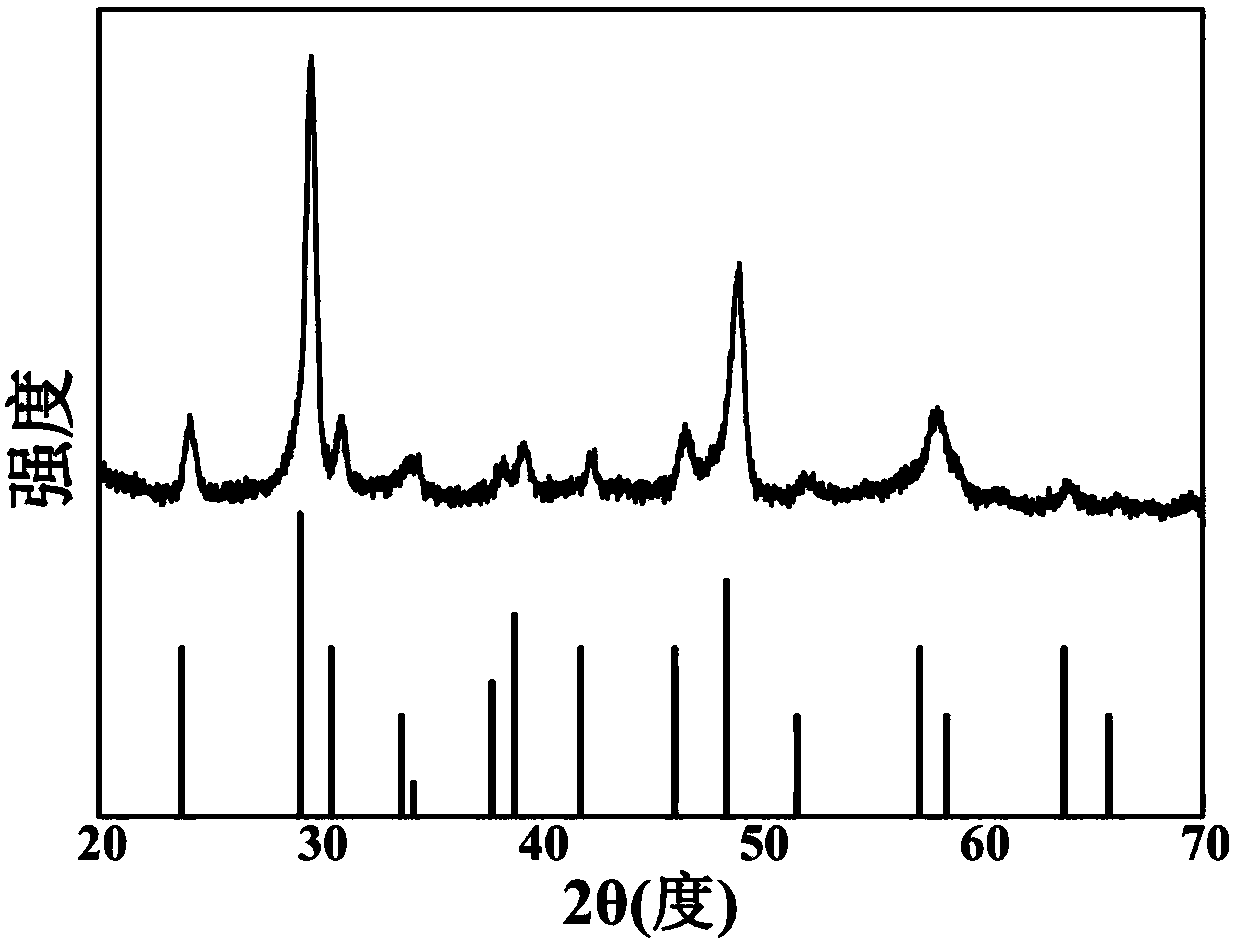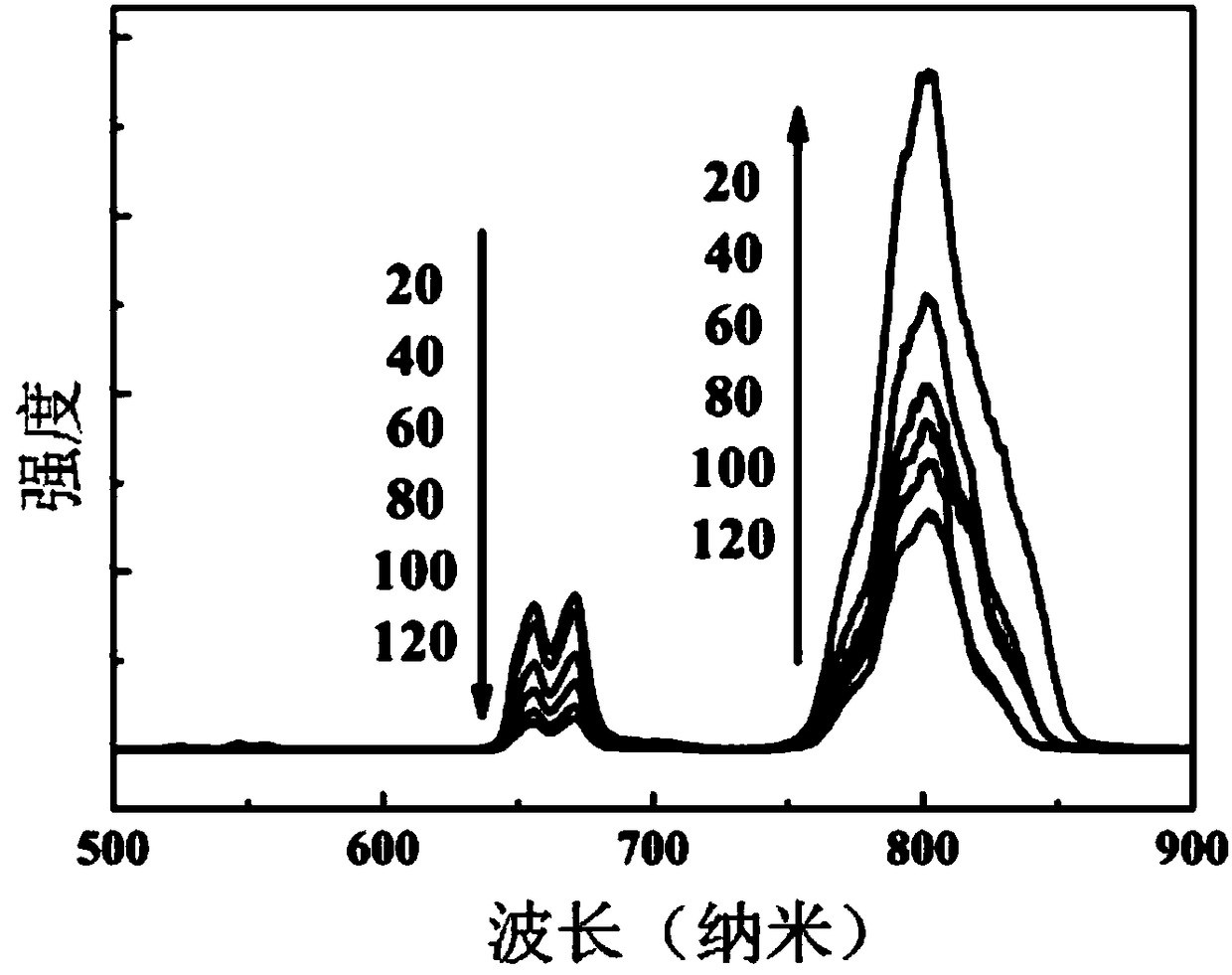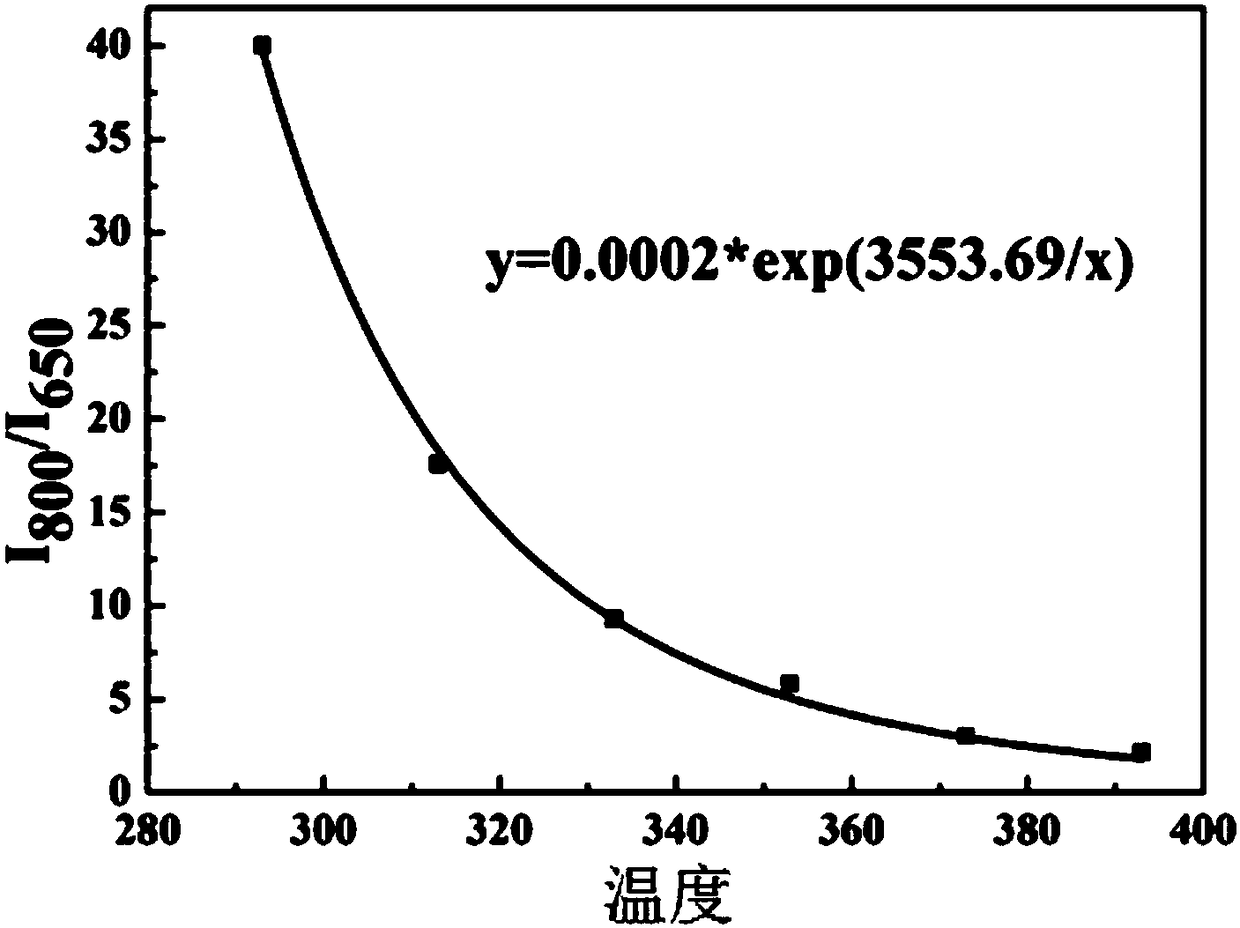Fluorescent temperature probe material
A technology of fluorescence temperature and fluorescence intensity, applied in the field of fluorescent temperature probe materials, can solve the problem of low sensitivity
- Summary
- Abstract
- Description
- Claims
- Application Information
AI Technical Summary
Problems solved by technology
Method used
Image
Examples
Embodiment 1
[0017] Fluorescent temperature probe material, including nanocrystalline shell layer, nanocrystalline intermediate layer and nanocrystalline core, the nanocrystalline core is doped with Tm whose fluorescence intensity decreases with the increase of temperature 3+ ions, Er doped in the nanocrystalline shell whose fluorescence intensity increases with temperature 3+ ions, interlayer nanocrystals for Tm reduction 3+ ions and Er3+ ions cross-relaxed inert layer. The nanocrystalline core is Na 3 Hf 7 :xYbyTm, the nanocrystalline interlayer is the nanocrystalline interlayer is Na 3 Hf 7 , the nanocrystalline shell is Na 3 ZrF 7 :mYbnEr; the ion doping concentration of x is 20-80%, the ion doping concentration of y is 0.5-2%, the ion doping concentration of m is 20-80%, and the ion doping concentration of n is 20-40% .
[0018] New Fluorescent Temperature Probe Material Na 3 Hf 7 :YbTm@Na 3 Hf 7 @Na 3 ZrF 7 : YbEr, preparation method, comprises the steps: (1) 0.795 mill...
PUM
 Login to View More
Login to View More Abstract
Description
Claims
Application Information
 Login to View More
Login to View More - R&D
- Intellectual Property
- Life Sciences
- Materials
- Tech Scout
- Unparalleled Data Quality
- Higher Quality Content
- 60% Fewer Hallucinations
Browse by: Latest US Patents, China's latest patents, Technical Efficacy Thesaurus, Application Domain, Technology Topic, Popular Technical Reports.
© 2025 PatSnap. All rights reserved.Legal|Privacy policy|Modern Slavery Act Transparency Statement|Sitemap|About US| Contact US: help@patsnap.com



